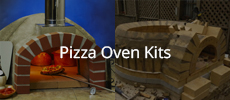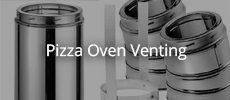Re: Curing, Cracks & Other Kentucky Conundrums
Sorry your badwfo cracked Ken.
I feel your pain.
I have a crack in my arch as well.. it bugs me some.... But once the fire gets to raging...I don't notice it.
If I were you, I would try mortaring that crack and see what happens, at least the visible part. It may take a couple of applications, but your oven is to beautiful to not try and fix it.
You might want to wait until you really get it smoking hot a few times. That crack may not be done yet. Mine grew and grew the first few raging fires. I hope yours doesn't do the same thing, but it might.
Anyways... my two cents.
I watched your video on how your oven draws. It does the job very well. I will have to try and build a vent like yours to see if I can get mine to draw better. My temporary vent system is inadequate. i.e. smoke in Dave's face sometimes. So it looks like I have vent to build this weekend.
Are you getting snowed on by that huge storm system in the east?
Dave
Announcement
Collapse
No announcement yet.
Curing, Cracks & Other Kentucky Conundrums
Collapse
X
-
Re: Curing, Cracks & Other Kentucky Conundrums
Hi Wade... Really good theory! The crack does appear to be widest in the very front, furthest from the heat. I had thought about that heat differential when trying to figure out what was moving. I like your theory of the dome actually expanding and pushing the arch out.
I'll put another fire in the oven tomorrow (rain/snow today) and see what the crack does.
Leave a comment:
-
Re: Curing, Cracks & Other Kentucky Conundrums
Ken
Wondering where the gaps in the crack are widest when hot, it may a good indicator of the direction of force. The place where you have the crack also corresponds to the widest part of the dome circle (the opening is centered on that). I ask cause I was wondering if the crack is caused by the force of the expanding dome pushing outward and not the arch pushing outward. The front inside part of the dome will see all of the high temp convection current, as well as the inside half of the arch. The highest concentration of internal stress will be between the areas of highest temp difference.
If the crack remains stable in size over a couple of more firings, I would think that you are not in danger of failure. In that case furnace caulk should be a good flexible solution.
Leave a comment:
-
Re: Curing, Cracks & Other Kentucky Conundrums
JC,
Thanks for the response!
What did you caulk with?Originally posted by jahysea View Post...I just caulked the inside arch...
I installed some bracing on the outside of the arch supports before starting my enclosure.I'd recommend simply building some mass on the outside of your arches, inside those walls. No-one will ever see the bracing buttress walls you build.

Good thing I saved my arch supports! Do you think I should do a few more curing fires first or do this right away?I'd also recommend re-supportting your arch and chipping some mortar out of the joint that has the crack, then re-mortaring it and letting it cure.
Thanks for the great reply!!
Leave a comment:
-
Re: Curing, Cracks & Other Kentucky Conundrums
Hi Ken.
I had a similar crack when initially curing. I'm a little surprised you have one as your masonry is clearly world class and your arch is beautiful. I think physics is just against you despite perfect brickwork. An arch doesn't just transfer weight downward, it also pushes outward. When I had my problem pops told me why it was what it was, and how to solve it....
(sideline.. You can doubt pops on this, but my father was a teacher, and he taught college Statics, not to be confused with statistics. Wikipedia reveals: "Statics is the branch of applied physics concerned with the analysis of loads (force, torque/moment) on physical systems in static equilibrium, that is, in a state where the relative positions of subsystems do not vary over time, or where components and structures are at rest under the action of external forces of equilibrium. When in static equilibrium, the system is either at rest, or moving at constant velocity through its center of mass.")
Heat will cause expansion and further the effort.
I hadn't yet placed the chimney onto the arches, so I just caulked the inside arch (it supports the oven walls so I couldn't tear it out) and tore the outside arch apart and remortared it. I also poured concrete around the outside of the arch base and built buttress walls. It hasn't spread further since and the remortared outside arch still has no cracks.
I see you have started your walls. I'd recommend simply building some mass on the outside of your arches, inside those walls. No-one will ever see the bracing buttress walls you build.
I'd also recommend re-supportting your arch and chipping some mortar out of the joint that has the crack, then re-mortaring it and letting it cure.
Your masonry is too great to suffer a crack in such a visible place....
Leave a comment:
-
Curing, Cracks & Other Kentucky Conundrums
Uhh-Ohhh...
I'm on about the 5th fire and starting to get things hot. The top 2-3 courses of the dome went white (well actually, clean of soot).
I discovered my first crack. It's not in the best place so I would like to solicit advice from the crowd.
The crack runs through both my front and rear vent arches on the left side and into one course on the dome. I'm not too worried about the dome part; thanks to the staggered courses, the crack stops there and doesn't look like it's going to spread.
The crack runs all the way through the joints. You can see daylight through it. I think my vent box mortared on top of the arch is what's supporting the arch in position (the whole thing is pretty much cantilevering now). Without the vent box, I suspect the other side would crack as well. If this happens, the arch isn't going to fall down. It'll just settle on the cracks.
When I had the oven hot, the crack was just wide enough for a dime to fit in. As it cooled down, the crack closed back to about 1/2 the width of a dime. This tells me that this is now (for better or worse) an expansion joint. I don't want to patch it with mortar because it will just crack again, or worse, crack somewhere worse.
SO... Any advice?? My first inclination is to get the oven hot and try to fill the gap with furnace cement/caulk to seal it and add support, but still give it the ability to expand and contract.
What do all you experts think? If you agree with my furnace cement idea, what product do I use?
The good news is that so far the dome looks good on the inside.2 PhotosTags: None





Leave a comment: